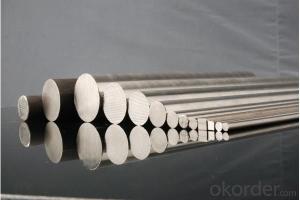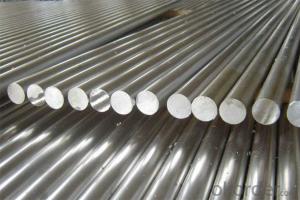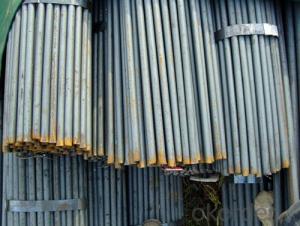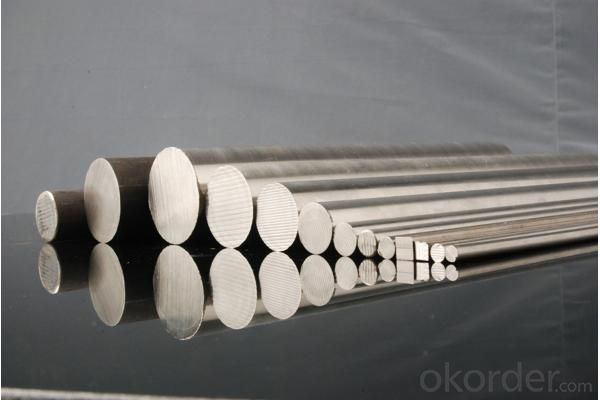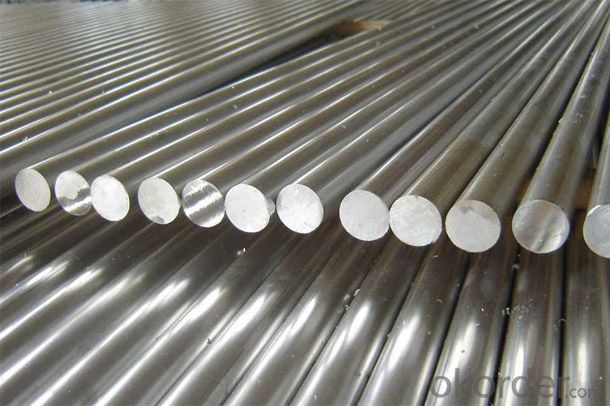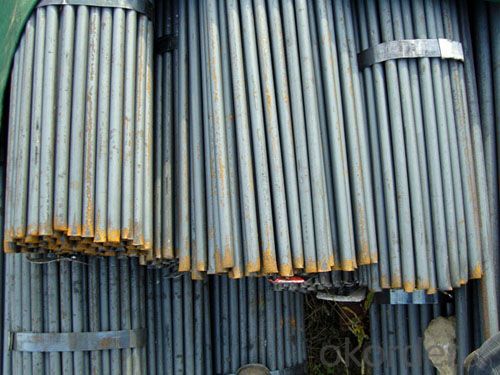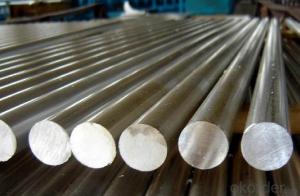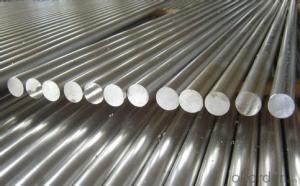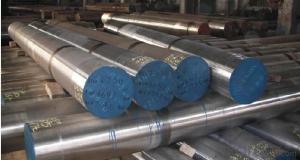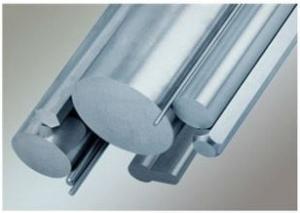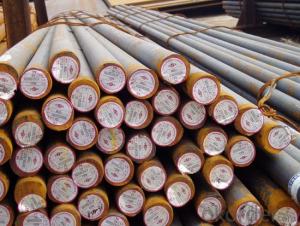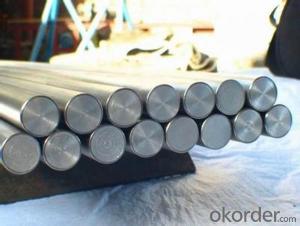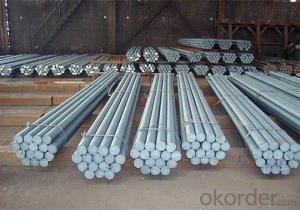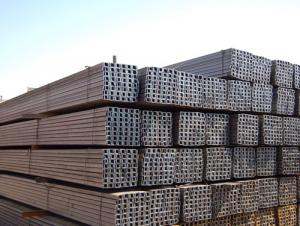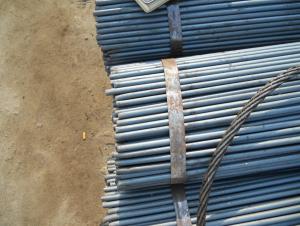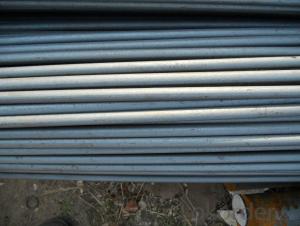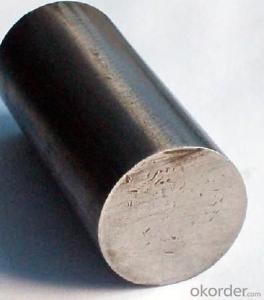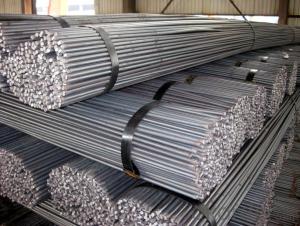Environmental High Quality 304 Stainless Steel Round Bar
- Loading Port:
- Tianjin
- Payment Terms:
- TT OR LC
- Min Order Qty:
- 25 m.t.
- Supply Capability:
- 20000 m.t./month
OKorder Service Pledge
Quality Product, Order Online Tracking, Timely Delivery
OKorder Financial Service
Credit Rating, Credit Services, Credit Purchasing
You Might Also Like
Specifications
Stainless Steel Bar
1.Cold roll cold draw pipe&tube
2.Grade: TP304,TP316L
3.Honor: CE/PED,AB
4.STANDARD: ASTM 312/213/269
Environmental High Quality 304 Stainless Steel Round Bar
Description:
| Series | Top Quility steel Rod |
| Grade | 300 series(304, 304 L,304H,310,310S,316, 316 L,317L,321etc.) |
| Technics | Hot-rolled, Hot-forged, Cold-drawn, Centerless Gringing |
| Surface | Peeled, Bright, Polish |
| Diamete Rang | Peeled bright round bar: 3-400mm |
| Hot-rolled bar: 3-130mm | |
| Hot- forged bar: 130-400mm | |
| Cold-drawn: 3-40mm | |
| Centerless grinding bright round bar: 3-100mm | |
| Dia torlarance:H9-K12 | |
| Length | Radom length, Specified length, Multiple length ( no more than 9m) |
| Usage | These products are widely supplied to areas of machine-made industry, chemical industry, |
| shipping industry, rchitecture, food industry, household products etc | |
| Packaging | Standard export packing, according to customer's requirment |
| Delivery Time | up to the order quantity |
| Certification | CE/PED,ABS, DNV ,GL,LR |
| Application | Pipe and Tubes for petrochemical industry,pharmaceutical industry ,food industry, |
| aviation and aerospace industry,architectural decoration industry |
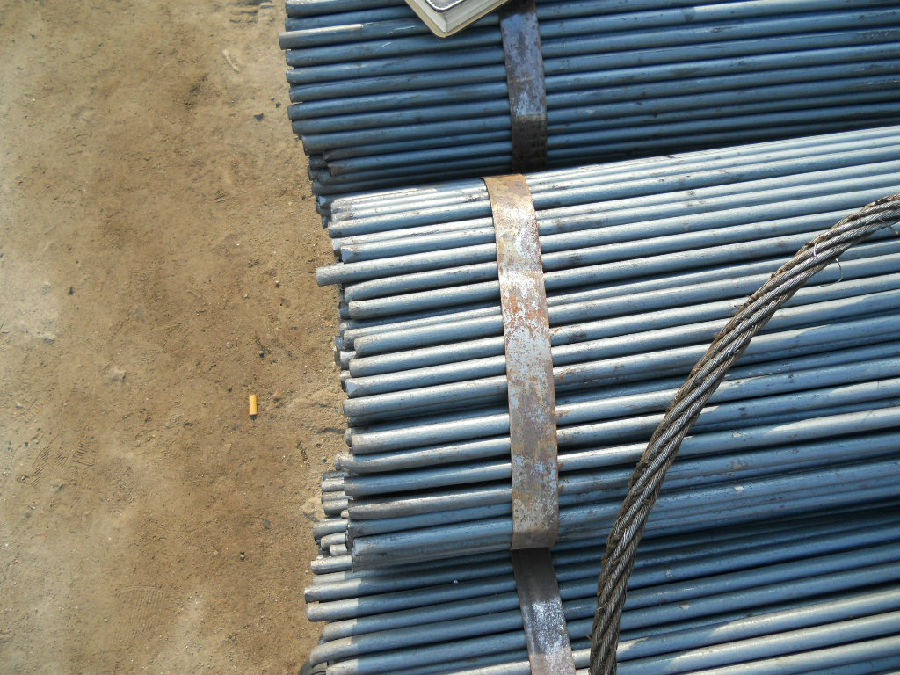
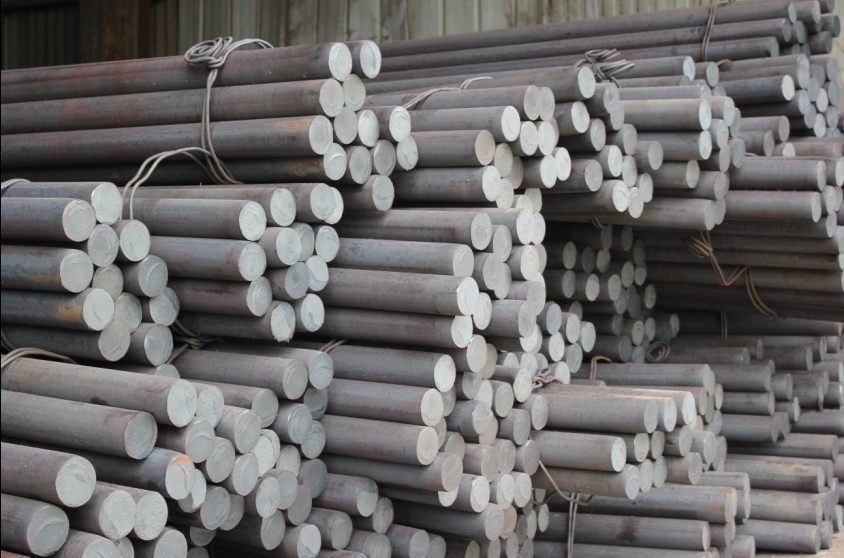
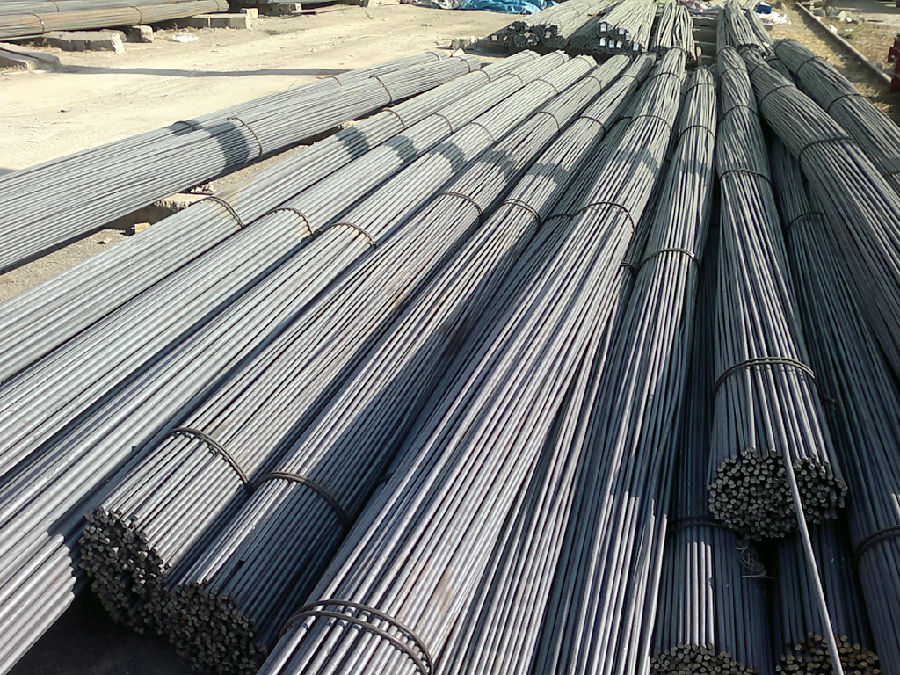
- Q: How do you cut steel round bars?
- Steel round bars can be cut using various methods such as sawing, shearing, or using a cutting torch. Sawing involves using a bandsaw or a hacksaw to cut through the bar, while shearing uses a hydraulic or mechanical shear to trim the bar. Alternatively, a cutting torch can be used to melt through the steel, creating a clean cut. The choice of method depends on the thickness and size of the round bar, as well as the desired precision and efficiency of the cut.
- Q: What are the common applications of steel round bars?
- Steel round bars are widely used in various industries due to their strength, versatility, and durability. Some common applications of steel round bars include: 1. Construction: Steel round bars are commonly used in construction projects such as building frames, bridges, and infrastructure. They provide structural support and can withstand heavy loads. Additionally, steel round bars are often used as reinforcement in concrete structures, increasing their strength and resilience. 2. Manufacturing: Steel round bars are utilized in the manufacturing industry for the production of various components and machinery. They are commonly used in the fabrication of gears, shafts, couplings, and axles, as they possess excellent machinability and can withstand high levels of stress and pressure. 3. Automotive: Steel round bars are extensively used in the automotive industry for manufacturing critical components like crankshafts, steering systems, suspension parts, and axles. Due to their high tensile strength and resistance to wear and tear, steel round bars play a crucial role in ensuring the safety and reliability of vehicles. 4. Aerospace: The aerospace industry relies heavily on steel round bars for the production of aircraft components, including landing gear, propeller shafts, and structural elements. Steel's high strength-to-weight ratio and excellent fatigue resistance make it an ideal choice for withstanding the extreme conditions experienced in aerospace applications. 5. Energy and power: Steel round bars are used in the energy and power sector for manufacturing equipment like turbines, generators, and power transmission systems. Steel's ability to handle high temperatures and its resistance to corrosion make it a suitable material for these applications. 6. Oil and gas: Steel round bars find extensive use in the oil and gas industry for the production of drilling equipment, pipelines, and valves. Steel's resistance to corrosion and high-pressure environments makes it an essential material in this sector. In summary, steel round bars have a wide range of applications across industries due to their strength, versatility, and resistance to wear and tear. They play a crucial role in construction, manufacturing, automotive, aerospace, energy, and power, as well as the oil and gas industry.
- Q: Are steel round bars resistant to chemicals?
- Yes, steel round bars are generally resistant to a wide range of chemicals. However, the level of resistance may vary depending on the specific type of steel and the particular chemical being used.
- Q: Can steel round bars be used for making turbine blades?
- Using steel round bars to make turbine blades is not possible. Turbine blades experience high temperatures and extreme forces, so they need to be durable and flexible. Steel round bars do not have the required properties to endure these conditions. Usually, turbine blades are constructed from materials like titanium alloys or advanced composites, which have a high strength-to-weight ratio, exceptional fatigue resistance, and thermal stability. These materials are purposely designed to withstand the challenging conditions of turbine operations, ensuring efficiency and reliability.
- Q: Can steel round bars be used in the packaging industry?
- Yes, steel round bars can be used in the packaging industry. Steel round bars are commonly used in packaging to provide structural support and strength to various types of packaging materials. They can be used as reinforcement bars or support rods in packaging crates, pallets, and containers. Steel round bars are known for their high strength and durability, making them ideal for withstanding heavy loads and ensuring the integrity of the packaging during transportation and storage. Additionally, steel round bars can be easily customized and cut to the desired length, allowing for flexibility in packaging design and requirements. Overall, the use of steel round bars in the packaging industry helps to improve the safety, stability, and protection of packaged products.
- Q: Can steel round bars be used in the telecommunications industry?
- Yes, steel round bars can be used in the telecommunications industry. Steel round bars are commonly used to provide structural support for various telecommunications equipment such as antennas, satellite dishes, and communication towers. These bars are highly durable and can withstand harsh weather conditions, making them suitable for outdoor installations. Additionally, steel round bars can be easily fabricated and shaped to meet specific design requirements, allowing for the integration of various components in the telecommunications infrastructure.
- Q: What is the difference between a cold finished and a turned steel round bar?
- A cold finished steel round bar and a turned steel round bar are both types of steel bars used in various industries for different applications. The main difference between the two lies in the manufacturing process and the resulting properties of the bars. A cold finished steel round bar is produced by cold drawing or cold rolling a hot rolled steel bar. This process involves passing the hot rolled bar through a series of dies at room temperature, which reduces its diameter and increases its length. The cold drawing process imparts specific mechanical properties to the steel, such as improved surface finish, dimensional accuracy, and increased strength. Cold finished steel bars have a smooth, shiny surface and are known for their close tolerances and uniformity in size and shape. They are commonly used in applications where precision and high-quality surface finish are essential, such as in the automotive, aerospace, and machining industries. On the other hand, a turned steel round bar is made by machining a hot rolled or cold finished bar on a lathe. The bar is clamped and rotated while a cutting tool removes material from its outer surface, creating the desired shape and dimensions. This turning process results in a bar with a rougher surface compared to a cold finished bar, but it allows for faster production and versatility in creating various shapes and sizes. Turned steel bars are often used in applications where the surface finish is not critical and machining operations are required, such as in the construction, engineering, and manufacturing industries. In summary, the difference between a cold finished and a turned steel round bar lies in the manufacturing process and the resulting properties. Cold finished bars are produced through cold drawing or cold rolling, resulting in improved dimensional accuracy, surface finish, and strength. Turned bars are machined on a lathe, offering versatility in shape and size but with a rougher surface finish. The choice between the two depends on the specific requirements of the application, including tolerance, surface finish, strength, and machinability.
- Q: What are the different types of steel round bars used in the manufacturing of bearings?
- There are several types of steel round bars that are commonly used in the manufacturing of bearings. These include: 1. Carbon steel round bars: They are durable and have good hardness, making them suitable for general-purpose bearings. 2. Chrome steel round bars: These bars have a higher hardness and better wear resistance, making them ideal for high-load and high-speed applications. 3. Stainless steel round bars: They provide excellent corrosion resistance and are commonly used in bearings for corrosive environments or food-grade applications. 4. Tool steel round bars: These bars have superior toughness and wear resistance, making them suitable for heavy-duty and high-temperature applications. Overall, the choice of steel round bar depends on the specific requirements and operating conditions of the bearings.
- Q: Can steel round bars be used for making railway tracks?
- Yes, steel round bars can be used for making railway tracks. Steel round bars are often used as the primary material for railway tracks due to their strength, durability, and ability to handle heavy loads. They provide a solid and stable foundation for trains to travel on and can withstand the constant wear and tear from train wheels. The round shape of the bars also helps to reduce friction and allows for smooth movement of the trains. Additionally, steel is resistant to corrosion, making it suitable for outdoor and long-lasting applications like railway tracks. Overall, steel round bars are a popular choice for making railway tracks due to their strength, durability, and reliability.
- Q: Can steel round bars be used for making oil and gas industry components?
- Yes, steel round bars can be used for making oil and gas industry components. Steel round bars possess high strength and durability, making them suitable for various applications in the oil and gas industry, such as drilling equipment, pipelines, valves, and connectors. Additionally, steel's resistance to corrosion and extreme temperatures further enhances its suitability for these components.
Send your message to us
Environmental High Quality 304 Stainless Steel Round Bar
- Loading Port:
- Tianjin
- Payment Terms:
- TT OR LC
- Min Order Qty:
- 25 m.t.
- Supply Capability:
- 20000 m.t./month
OKorder Service Pledge
Quality Product, Order Online Tracking, Timely Delivery
OKorder Financial Service
Credit Rating, Credit Services, Credit Purchasing
Similar products
Hot products
Hot Searches
Related keywords
